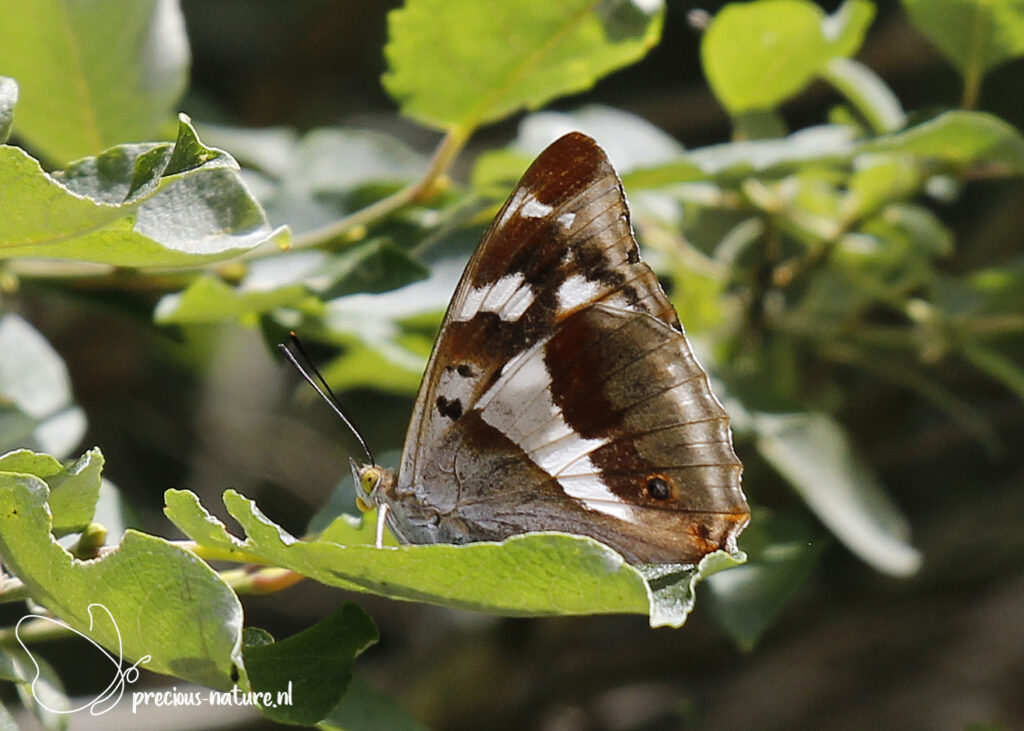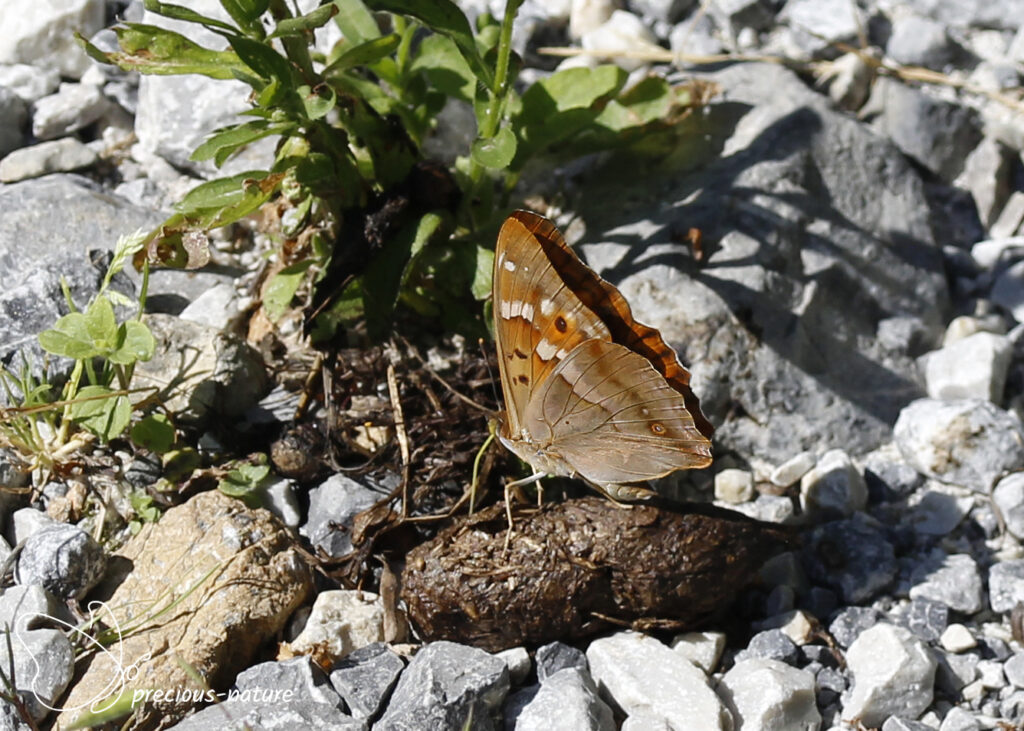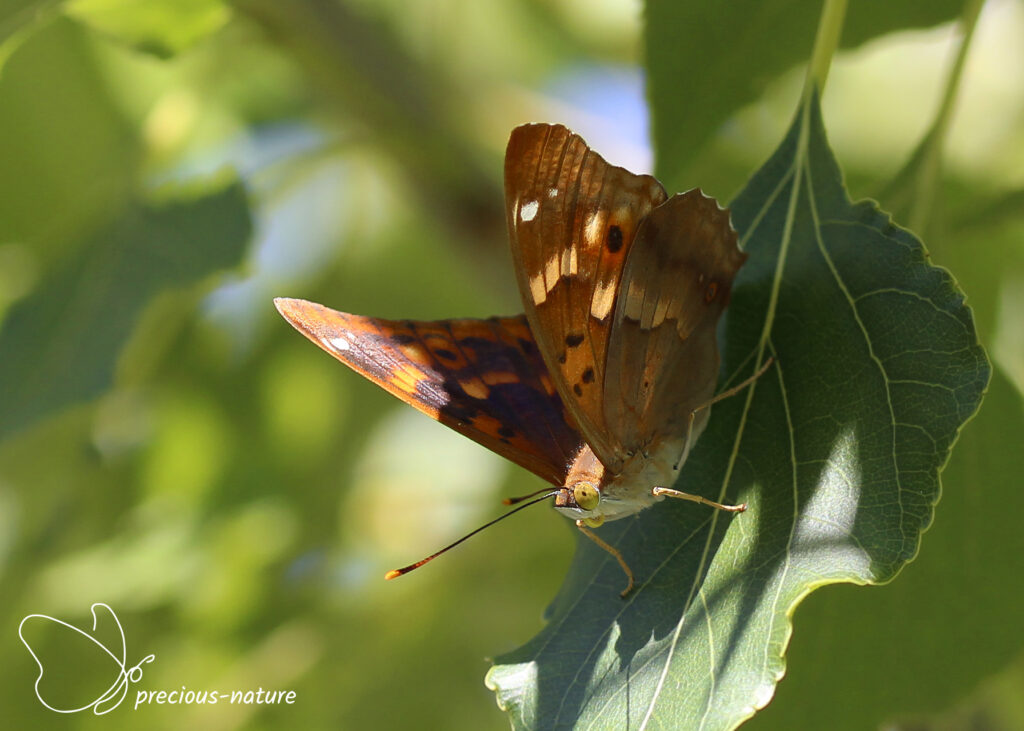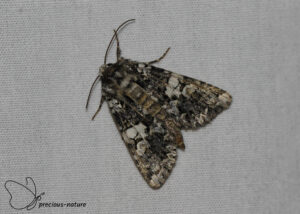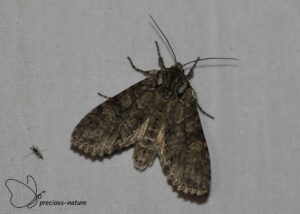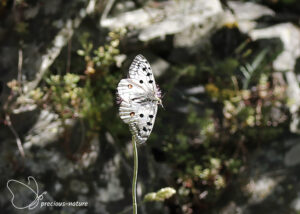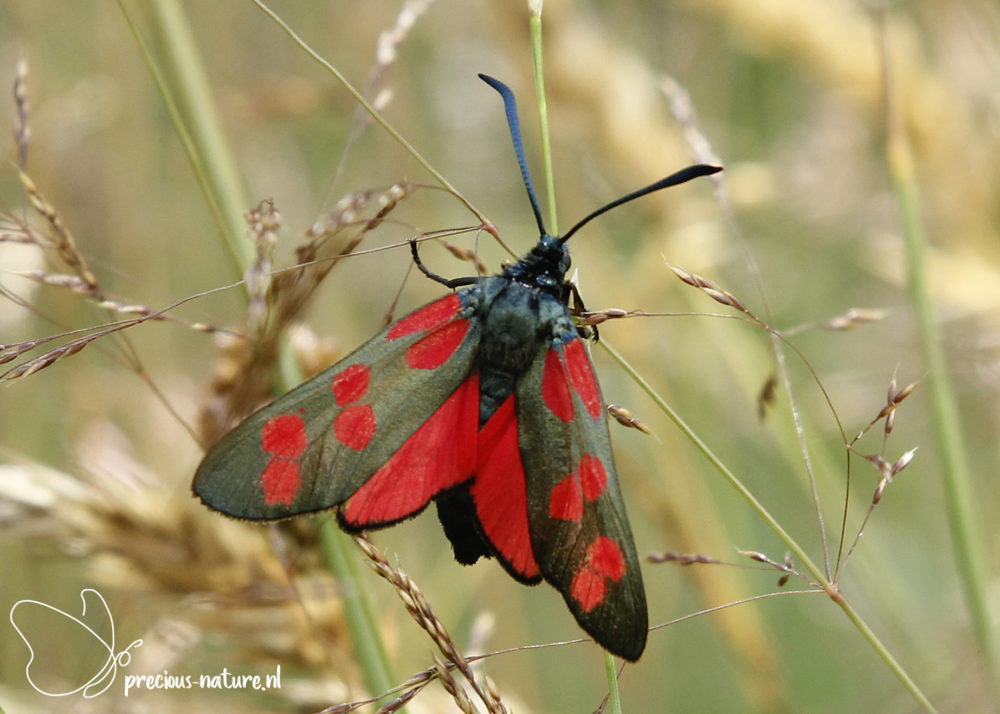Emperors (Apaturinae) are large butterflies that are a subfamily of the Brush-footed Butterflies (Nymphalidae). This subfamily comprises 20 genera and shows distinct distributions and unique host plant associations. Most genera of this subfamily are distributed in Eurasia, Southeast Asia, and Africa, while the genera Doxocopa and Asterocampa are mainly found in South America and North America, respectively. Although the larvae primarily feed on the hemp family (Cannabaceae) plants, the genus Apatura is associated with the Willow and Poplar (Salicaceae), which are distantly related to the hemp family. The males have an intense purple sheen on the top of the forewing. The deep purple-blue sheen is produced by light refracted by ridges on the wing scales. The colour is only visible from certain angles and in bright light. The females lack the glare and have larger white or orange spots. The males come to the ground in the morning to drink from the moist soil. For the rest of the day, the butterflies can be found in the treetops.
Genus: Apatura
Purple Emperor – 2022 (DE)
(NCBI-index: 191396)
Sometimes you have to be a bit lucky to encounter certain butterflies. Usually, the Purple Emperor (Apatura iris) sits high in the trees and only comes to the ground in the morning to drink from the excrement or carcasses of small animals. They care about the minerals that are present. At the end of my route through the Eifel area, I suddenly saw this beautiful, large butterfly 5 meters high on a tree leaf. Unfortunately, I could only photograph the underside of the wing, allowing me to see the distinctive blue-purple reflection when it was a male. The female does not have this colour. The underside of the hindwing is chestnut brown with a broad white band and a clear tooth on the outside in the midfield. The flight period spans one generation, from mid-June to early August, and the wingspan ranges from 60 to 74 mm. Host plant: Willow. Dutch name: Grote weerschijnvlinder. Frisian name: Grutte wjerskynflinter.
Flying period:

Genus: Apatura
Lesser Purple Emperor – 2025 (IT)
(NCBI-index: 461127)
The Lesser Purple Emperor (Apatura ilia) is found primarily in river valleys and always near trees where it usually roosts. They generally inhabit nutrient-rich soil. The upperside of the male’s orange and black patterned wings has a blue-purple sheen. The female is orange-brown and lacks this sheen. On the upperside of the forewing, near the trailing edge in cell c2, there is a conspicuous black eyespot with an orange border. This is also a distinguishing feature compared to the very similar Purple Emperor (Apatura iris). The orange border is absent, and only a dark eyespot is visible on the predominantly dark brown forewing. On the upperside of the hindwing, the white band in the inner discal field is not straight, while it is in the Purple Emperor. The flight period spans one generation, from late May to July, and the wingspan ranges from 55 to 70 mm. Host plant: Poplar, Willow. Dutch name: Kleine weerschijnvlinder. Frisian name: Lytse wjerskynflinter.
Flying period:


